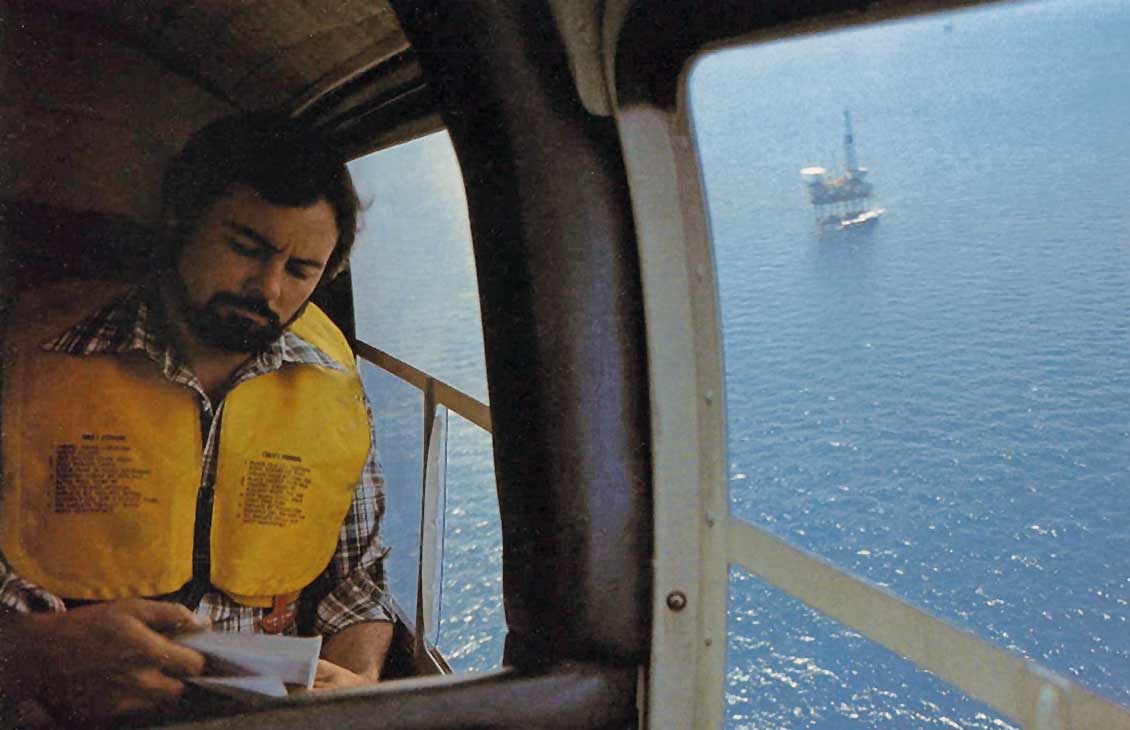1970s
Innovating to lead

Growing computer power and engineering sophistication enabled the development of a host of new complex applications designed to improve accuracy and save the customer time and energy. The advantage provided by its unparalleled range of tools reinforced Schlumberger as the market leader, and that meant the company was in prime position to benefit from the upsurge in worldwide oil exploration triggered by the OPEC oil embargo of 1973.
Computerized log interpretation began in 1970. The SARABAND program integrated all existing log measurements used to measure the volume of clay minerals in the rock and calculate fluid saturations. While SARABAND was designed for analyzing shaly sands, its sister application CORIBAND was developed to deal with multimineral lithology.
In 1971, the "triple combo" logging tool was introduced, reducing operating time and risk for the customer by providing gamma ray, spontaneous potential (SP), resistivity, neutron, density, and caliper measurements in one piece of equipment.
The first logging truck equipped with a computer entered the field in 1976 as part of the Cyber Service Unit (CSU). In 1975, Schlumberger joined ARPAnet, the computer-based research network created by the US Department of Defense that would later develop into the Internet.
In the latter part of the decade, Schlumberger introduced the first-generation sonic digital tool (SDT) for uphole processing of compressional and shear sound speeds in formations. Also getting under way then was research on the company's accelerator porosity tool (APT), a multidetector neutron tool with pulsed neutron source, which measures slowing-down time. In 1979, the first observation of the propagating slow wave, a long-predicted feature of the acoustics of porous media, prepared the ground for applications that could eliminate unwanted signals.
Strategic acquisitions included that of Flopetrol, a specialist in testing oilwell production, in 1971. Schlumberger bought the 50% of Forex it did not already own and created the Forex Neptune Drilling Company in the same year. The Analysts, a directional drilling and mud logging services provider, was acquired in 1977, paving the way for success in the fast-expanding measurement-while-drilling sector.
| Year | Event |
| 1970 | Introduces SARABAND program, the first computerized reservoir analysis |
| 1971 | Acquires Flopetrol (testing production of oil wells) Acquires remaining 50% of Forex and created Forex Neptune Drilling Company Introduces the "triple combo" tool, the first logging tool that combined gamma ray, SP, induction, spherically focused resistivity, sonic, and caliper logs |
| 1972 | Introduces DLL Dual Laterolog Resistivity for simultaneous measurement of shallow region invaded by borehole fluids and the deep undamaged formation Jean Riboud appointed Chairman of the Board Installs the first permanent, analog pressure gauge installation, offshore Congo, providing real-time pressure data |
| 1973 | Opens Schlumberger museum in Crèvecoeur-en-Auge in Normandy, France |
| 1975 | Schlumberger joins ARPAnet, the predecessor of the Internet |
| 1976 |
First logging truck equipped with a computer—the Cyber Service Unit (CSU) for wellsite instrumentation—goes into service |
| 1977 | Commercializes the EPT electromagnetic propagation tool, which uses travel time and attenuation of microwave-frequency electromagnetic waves to determine the amount of water in rock pores Begins developing the four-detector compensated neutron porosity tool Acquires The Analysts, a directional drilling and mud logging services provider |
| 1978 | Develops the SDT tool, the first-generation digital sonic tool for uphole processing of compressional and shear sound speeds in formations |
| 1979 | Develops the Nodal productional analysis system |
